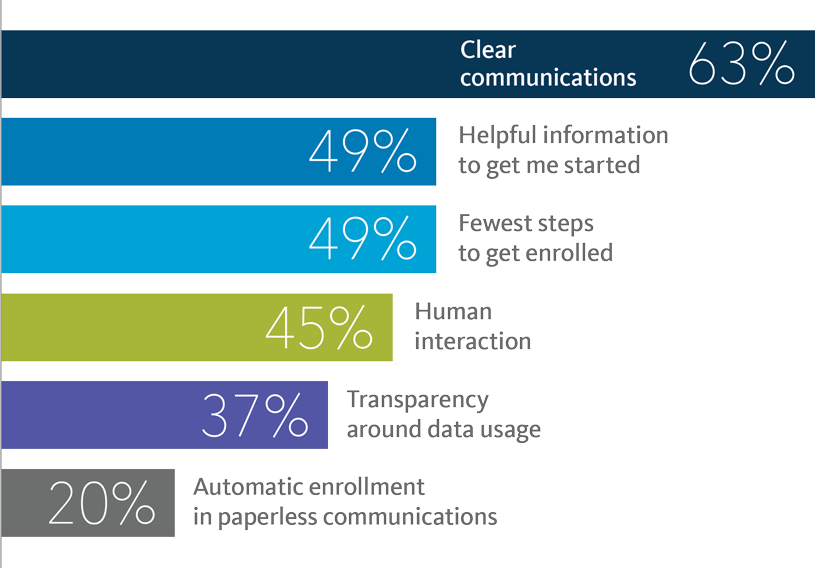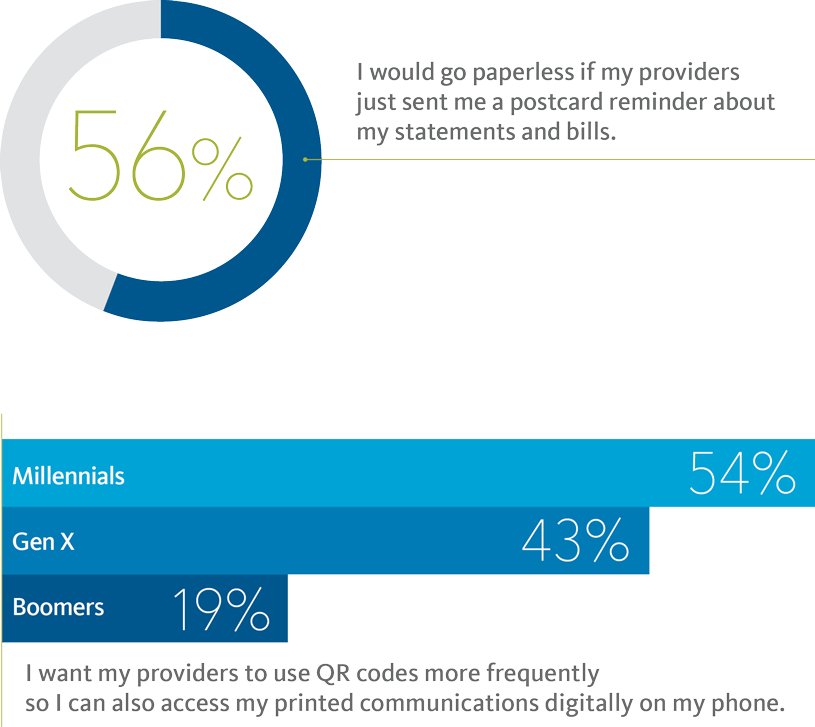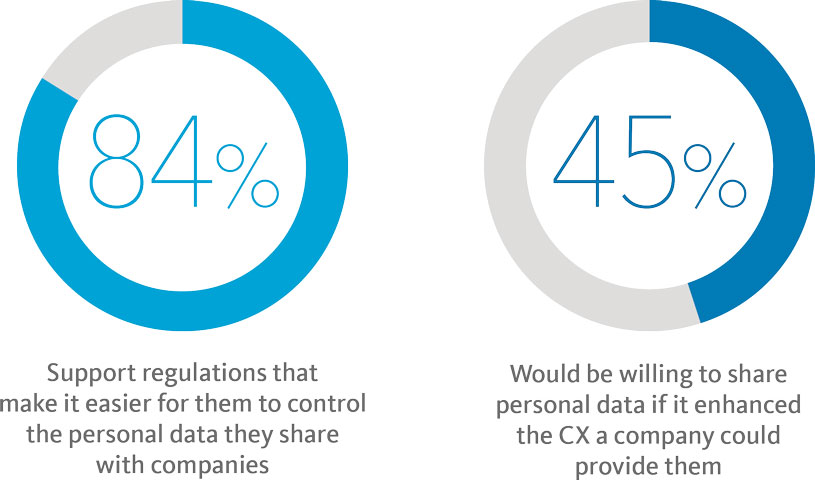CX and communications: Linked in critical ways
Service is important. But customers mostly rate your CX based on your communications—a fact that holds true across age, gender, income level and education.
Top 5 attributes of companies that deliver exemplary CX

>>> INSIGHT: It’s time to take stock
A proactive audit of your communications can help you recognize opportunities and prioritize improvements.
- Start by looking across your communications: Identify inconsistencies in look and feel, formatting, logos, language, and more
- Focus on key communications that offer the greatest chance for improvement and impact, such as monthly statements
- Overlay feedback and suggestions from your customers and stakeholders on how you can enhance communication performance and CX
- Prioritize next steps to accelerate enhanced engagement
Along the way, you may uncover technology or process hurdles that are keeping you from optimizing your communication CX. Weigh the benefits that technology and workflow changes can bring.









